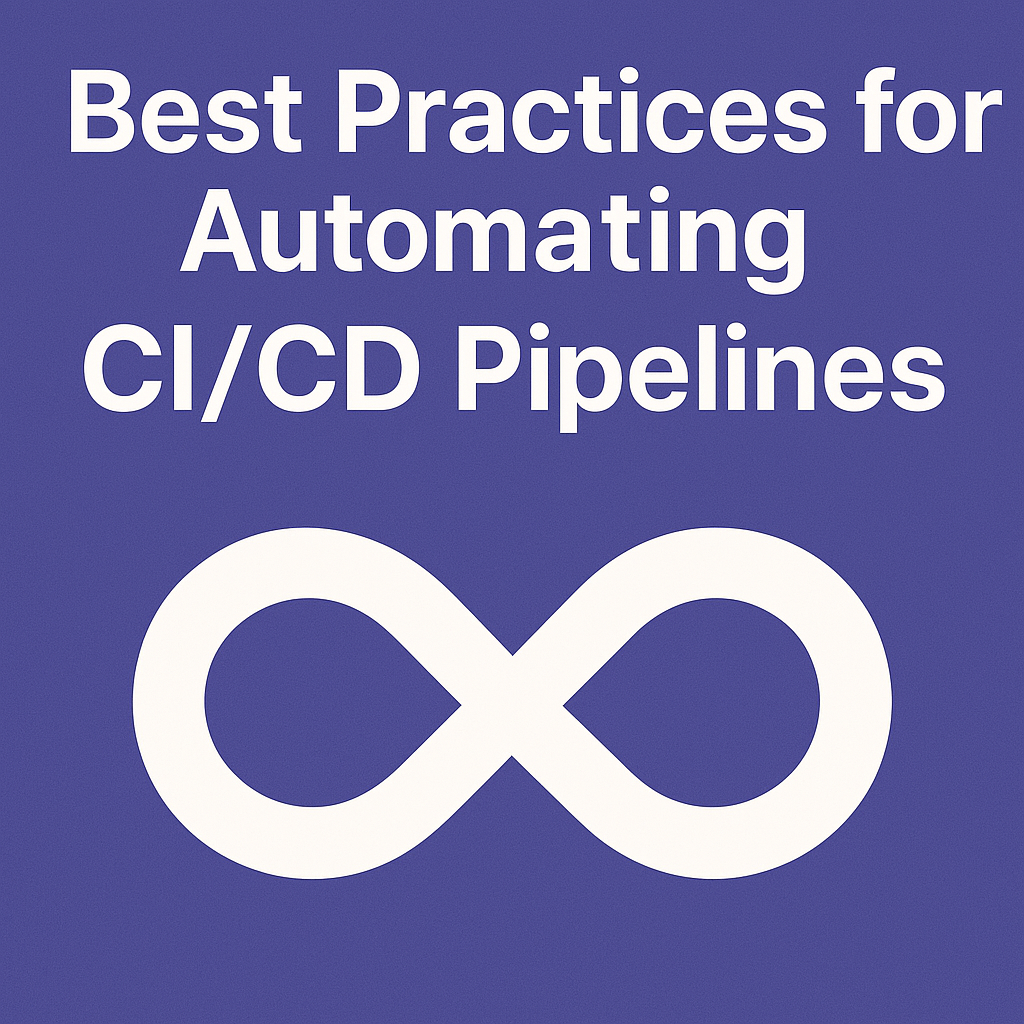Best Practices for Automating CI/CD Pipelines.


In today’s fast-paced software development world, Continuous Integration and Continuous Deployment (CI/CD) have become essential practices for delivering high-quality applications quickly and reliably. Automating CI/CD pipelines not only accelerates the development lifecycle but also reduces errors, enhances collaboration, and improves overall software quality. However, like any automated process, it needs to be carefully planned and maintained.
In this post, we’ll explore the best practices for automating CI/CD pipelines effectively, ensuring you get the most out of your DevOps workflows.
🧠 What Is CI/CD?
CI (Continuous Integration) is the practice of merging all developers’ working copies to a shared mainline several times a day. Automated builds and tests are triggered with every commit to ensure code quality and catch bugs early.
CD (Continuous Deployment/Delivery) picks up where CI leaves off. Continuous Delivery ensures that code can be safely deployed to production at any time. Continuous Deployment goes one step further—automatically deploying every change that passes all tests into production.
✅ Why Automate Your CI/CD Pipeline?
Automating CI/CD pipelines:
Minimizes human error
Accelerates feedback loops
Ensures consistent and repeatable deployments
Enables rapid iteration and innovation
Improves developer productivity
Now let’s dive into the best practices.
🔧 1. Start with a Clear Pipeline Design
Begin by mapping out the key stages of your pipeline:
Source (e.g., Git push triggers)
Build (compile and package code)
Test (unit, integration, end-to-end)
Staging/Review (optional environment for QA or UAT)
Deploy (production deployment)
Use pipeline-as-code (e.g., Jenkinsfiles, GitHub Actions workflows) to keep pipeline definitions version-controlled and auditable.
🧪 2. Prioritize Testing Early and Often
Testing is the backbone of a reliable CI/CD pipeline. Incorporate:
Unit tests during the CI stage
Integration tests before staging
End-to-end (E2E) tests before or during deployment
Smoke tests post-deployment
Automate as much testing as possible, and use test coverage metrics to measure effectiveness.
🔐 3. Secure Your Pipeline
Security often gets overlooked in automation. Best practices include:
Secrets Management: Use secure vaults (e.g., HashiCorp Vault, AWS Secrets Manager) for API keys and credentials.
Least Privilege Access: Grant the minimum necessary permissions for build and deploy stages.
Static Code Analysis: Integrate tools like SonarQube or Snyk to detect security vulnerabilities.
Dependency Scanning: Automatically check for known vulnerabilities in libraries.
🔄 4. Use Infrastructure as Code (IaC)
Automate infrastructure provisioning using tools like:
Terraform
AWS CloudFormation
Pulumi
Ansible
IaC ensures that environments are consistent and reproducible across development, staging, and production.
📊 5. Monitor and Measure Everything
Monitoring isn’t just for production—track performance and errors in your CI/CD process too:
Pipeline metrics: Build duration, success/failure rates
Deployment metrics: Time to deploy, rollback frequency
Application metrics: Latency, throughput, error rates
Tools like Prometheus, Grafana, Datadog, and New Relic are great for this.
🧩 6. Modularize Your Pipelines
Break large pipelines into smaller, reusable components:
Separate build and deploy steps
Create reusable workflow templates
Enable conditional steps for different environments
This makes maintenance easier and speeds up pipeline execution.
🔁 7. Embrace Trunk-Based Development
Work with short-lived branches and merge changes into the main branch frequently. This practice:
Encourages faster integration
Reduces merge conflicts
Aligns well with CI/CD automation
Avoid long-running feature branches whenever possible.
🚀 8. Automate Rollbacks and Recovery
Not every deployment goes smoothly. Prepare for failure:
Blue/Green Deployments: Switch traffic between two environments
Canary Releases: Gradually roll out changes
Automated Rollbacks: Trigger a rollback on test or monitoring failure
Make sure you can recover quickly from bad deploys.
🧹 9. Keep Pipelines Fast and Clean
A slow pipeline kills developer productivity. To keep it fast:
Run tests in parallel
Use caching for dependencies
Clean up temporary resources
Avoid redundant steps
Audit pipelines periodically to remove unnecessary tasks and speed up execution.
🤝 10. Collaborate and Document
Finally, CI/CD automation isn’t just a DevOps responsibility—developers, testers, and product owners all benefit.
Keep pipeline logic in version control
Document processes clearly
Hold regular retrospectives on failures and improvements
Encourage shared ownership
Final Thoughts
Automating CI/CD pipelines is a critical step toward building a modern, scalable DevOps culture. But automation without intention can lead to brittle, over-complicated systems. By following these best practices, you’ll lay a strong foundation for delivering high-quality software quickly, reliably, and securely.
Remember: CI/CD isn’t just a toolchain—it’s a mindset of continuous improvement. Start small, iterate often, and keep refining.